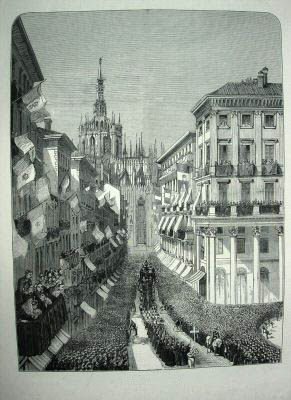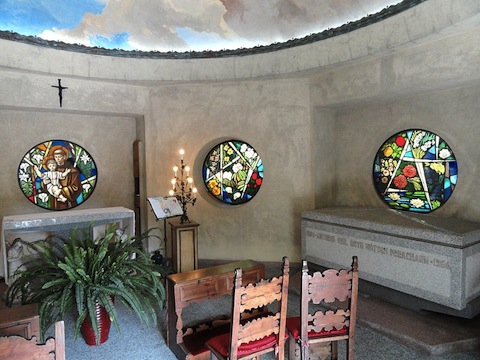As a culture, Italians are often inclined towards heavily theatrical rituals when it comes to major life events. Death and funerals, however, are exceptions: these focus more on the seriousness and the finality of death. Informed by the teachings of Catholicism, the primary religion of Italy, a combination of religious beliefs and superstitions about death permeates the Italian way of coping with death and the Italian funeral traditions performed in the honor of lost loved ones.
Historically, many Italians feared that the lost loved one’s soul would not actually leave Earth—that the lost loved one might return someday. This ancient superstition still informs the custom by which a good portion of Italians do not speak of their lost loved ones after the mourning period is done. In order to feel as though the souls of their lost loved ones have successfully departed Earth, many Italians often bury some of the lost loved one’s favorite items with them.
One traditions involves keeping the funeral open for everyone from the lost person’s town or village to attend and mourn with the family and loved ones. Quite similar to an obituary in America, posters are sometimes hung up around town to alert everyone of the loved one’s death and to tell them when the funeral will occur. In the old days, wealthy Italian families would pay strangers to wail for their lost loved ones at the funerals. As traditions have evolved, this one has become virtually extinct, since solemn respect has become more important to Italians than the theatrical aspect of wailing.
The majority of funerals follow the Catholic traditions, such as last rites, vigils, funeral liturgies and a proper Mass with pallbearers as frequent fixtures. Flowers are also an essential element to Italian funerals. With the open casket as a typical tradition, mourners often kiss the loved one’s cheek or forehead and even foster this kissing ritual in their children as a sign of respect. While in the past, the procession to the gravesite travelled by foot and followed either a horse-drawn carriage or hearse, now Italians mostly follow the hearse in their vehicles. Due to a lack of burial space, mausoleums are much more common burial places for lost loved ones than the ground.
Related SevenPonds articles:
- Tolkotin Native Americans: Rituals for the End of Life and Burial
- Illuminating Death through Art
- Traditional Burial Rites for the Maori

 Italian Funeral Traditions
Italian Funeral Traditions




 “Making Mobiles” by Karolina Merska
“Making Mobiles” by Karolina Merska
 “Hands Up to the Sky” by Michael Franti & Spearhead
“Hands Up to the Sky” by Michael Franti & Spearhead
 Coping With Election Grief
Coping With Election Grief














